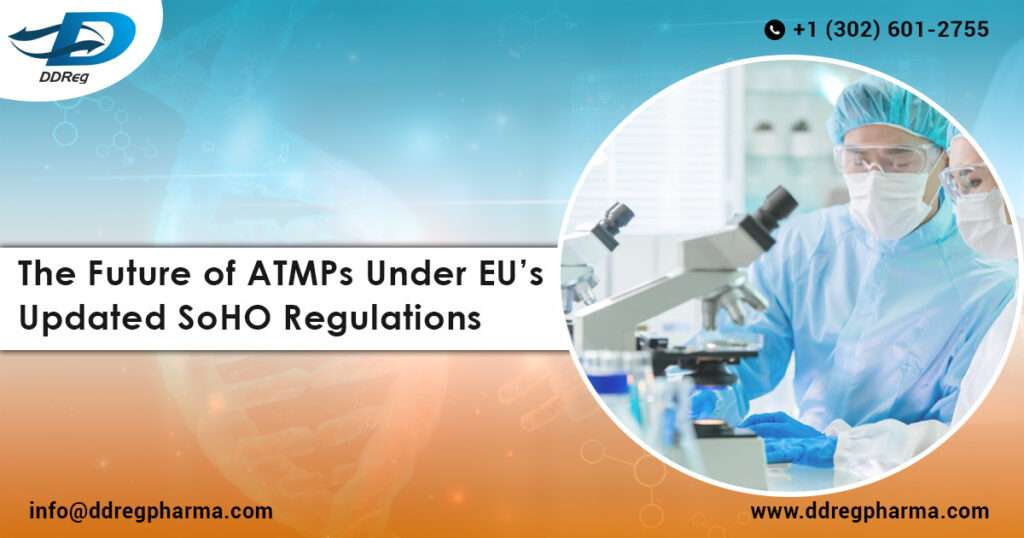The Advanced Therapy Medicinal Products (ATMPs) regulation was and covers gene therapy, somatic cell therapy, and tissue-engineered products. The ATMP’s requirements for the development, manufacturing, approval, and post-marketing surveillance for these products are regulated under regulation (EC) No. 1394/2007 and Directive 2001/83/EC in the European Union (EU). Stringent regulatory agencies, like the European Medicines Agency (EMA), are working towards establishing a robust regulatory framework for ATMPs to ensure the public and patients have access to safe products that have minimal adverse impact on human health. This also applies to ATMPs that constitute substances derived from humans, given how sensitive in nature they are. Stringent regulations are required to ensure patient safety, quality and consistence, ethical sourcing, among other important aspects.
The Substance of Human Origin (. The regulation was adopted on 27th May 2024. The new SoHO regulation was published on 17th July 2024 to enhance the safety and efficacy of products derived from human substances and also it emphasizes stricter controls and oversight over the sourcing and processing of human tissues and cells used in ATMPs.
How does the updated SoHO regulation differ from EU regulation (EC) No 1394/2007?
The updated SoHO regulation represents a transformative shift, aiming to refine the regulatory landscape and elevate standards across various ATMPs in the EU.
Broadened scope: contrast, Regulation (EC) No 1394/2007 was specifically focused on ATMPs, which limited its applicability to gene therapy, somatic cell therapy, and tissue-engineered products.
Enhanced safety protocols: The new SoHO regulation emphasizes improved safety and quality standards throughout the entire lifecycle of human-origin products. This includes registration to testing of donors, collection, and processing to human application, and clinical outcome monitoring.
Enhanced harmonization across member states:
The regulation aims to increase harmonization and facilitate cross-border exchanges and access to SoHO by:
- Establishment of an EU-level SoHO coordination board
- Introduction of common procedures for authorization and assessment of SoHO preparations
- Requiring member states to designate national authorities for SoHO preparations, and
- Setting additional authorization inspection requirements for establishments processing, storing, importing, or exporting substances of human origin.
- EU SoHO platform: a common IT platform for sharing registration, submission, and exchange of data. The platform will enable the collection and publication of data on donations, clinical use, and potential adverse reactions, all under clear governance and following data protection regulations.
Voluntary and unpaid donation
The new regulation mandates SoHO donations to be voluntary and unpaid (refers to the donations that are given freely, without any form of compensation or coercion), with no financial incentives, while living donors (refers to donors that are still alive) may receive compensation or reimbursement as per national legislation.
Vigilance, supply continuity, and national plans to respond to emergencies
The regulation mandates a rapid alert system for serious incidents that pose risks to recipients or donors. It also mandates Member States to ensure an adequate and resilient supply of critical SoHO in their countries, through national emergency plans and measures which respond to critical shortages.
Future Outlook for ATMPs under the Updated SoHO Regulation
After comparing the previous and current scenarios, the future of ATMPs in the EU is set to reach new heights, offering more innovative and novel therapies that treat complex conditions and enhancing patient access.
- Accelerated innovations: Access to innovative treatments is now easier thanks to the updated regulation, which has established a consistent standard among EU nations. More flexibility in registering and gaining access to goods with human origins is anticipated in the future.
- With the addition of human breast milk and intestinal microbiota in the current regulations, the EU eyes to expand the SoHO scope in the coming future.
- Improved patient access: With harmonized standards and faster approval pathways, ATMPs could become more readily available across the EU countries.
- Safety and quality standards: Given the current scenarios, more safety, traceability, and quality-related measures will be implemented in the future to protect public health.
Conclusion
The updated SoHO regulation stands to redefine the ATMP landscape in the EU, balancing the need for innovations with rigorous standards of safety, quality, and accessibility. The SoHO Regulation is designed to be future proof by allowing for rapid updates to safety standards based on emerging scientific evidence. By adopting a risk-based framework, the regulation reduces regulatory complexity and supports a harmonized approach across member states, thereby encouraging faster development cycles and smoother cross-border collaboration. As the updated SoHO regulation becomes fully integrated, we can anticipate a future in which the EU includes additional SoHO substances. As ATMPs continue to unlock new possibilities in medicine therapies Europe’s regulatory landscape is set to empower a future of healthcare that is both accessible and transformative.
In addition to providing regulatory and pharmacovigilance services for global customers, DDReg Pharma offers specialized clinical regulatory services to assist with Clinical Trial Applications in Europe. For further information, connect with our experts. Read more about EU regulations from the experts here: Navigating EU Classification Standards for AI in Medical Devices and Diagnostics.

